Classical period (music): Difference between revisions
m Reverted edits by 173.249.64.174 (talk) to last revision by ClueBot NG (HG) |
No edit summary |
||
| Line 6: | Line 6: | ||
The Classical period falls between the [[Baroque music|Baroque]] and the [[Romantic music|Romantic]] periods. The best-known composers from this period are [[Joseph Haydn]], [[Wolfgang Amadeus Mozart]], [[Ludwig van Beethoven]], and [[Franz Schubert]]; other notable names include [[Luigi Boccherini]], [[Muzio Clementi]], [[Antonio Soler]], [[Antonio Salieri]], [[François Joseph Gossec]], [[Johann Stamitz]], [[Carl Friedrich Abel]], [[Carl Philipp Emanuel Bach]], and [[Christoph Willibald Gluck]]. Ludwig van Beethoven is also regarded either as a Romantic composer or a composer who was part of the transition to the Romantic. |
The Classical period falls between the [[Baroque music|Baroque]] and the [[Romantic music|Romantic]] periods. The best-known composers from this period are [[Joseph Haydn]], [[Wolfgang Amadeus Mozart]], [[Ludwig van Beethoven]], and [[Franz Schubert]]; other notable names include [[Luigi Boccherini]], [[Muzio Clementi]], [[Antonio Soler]], [[Antonio Salieri]], [[François Joseph Gossec]], [[Johann Stamitz]], [[Carl Friedrich Abel]], [[Carl Philipp Emanuel Bach]], and [[Christoph Willibald Gluck]]. Ludwig van Beethoven is also regarded either as a Romantic composer or a composer who was part of the transition to the Romantic. |
||
[[Franz Schubert]] is also something of a transitional figure, as are [[ |
[[Franz Schubert]] is also something of a transitional figure, as are [[Mckee Mckee Peoria Notre Damel]], [[Mckee Mckee Peoria Notre Damei]], [[Mckee Mckee Peoria Notre Dame]], [[Mckee Mckee Peoria Notre Dame]], [[Mckee Mckee Peoria Notre Dame]], [[Mckee Mckee Peoria Notre Dame]], and [[Carl Maria von Weber]]. The period is sometimes referred to as the era of ''Viennese Classic'' or ''Classicism'' ({{lang-de|Wiener Klassik}}), since Wolfgang Amadeus Mozart, Joseph Haydn, Antonio Salieri, and Ludwig van Beethoven all worked at some time in [[Vienna]], and Franz Schubert was born there. |
||
== Classicism == |
== Classicism == |
||
Revision as of 17:39, 20 February 2014
| Major eras of Western classical music | ||||||||||||
|---|---|---|---|---|---|---|---|---|---|---|---|---|
| Early music | ||||||||||||
|
||||||||||||
| Common practice period | ||||||||||||
|
||||||||||||
| New music | ||||||||||||
|
||||||||||||
The dates of the Classical period in Western music are generally accepted as being between about 1730 and 1820. However, the term classical music is used in a colloquial sense to describe a variety of Western musical styles from the ninth century to the present, and especially from the sixteenth or seventeenth to the nineteenth. This article is about the specific period from 1750 to 1820.[1]
The Classical period falls between the Baroque and the Romantic periods. The best-known composers from this period are Joseph Haydn, Wolfgang Amadeus Mozart, Ludwig van Beethoven, and Franz Schubert; other notable names include Luigi Boccherini, Muzio Clementi, Antonio Soler, Antonio Salieri, François Joseph Gossec, Johann Stamitz, Carl Friedrich Abel, Carl Philipp Emanuel Bach, and Christoph Willibald Gluck. Ludwig van Beethoven is also regarded either as a Romantic composer or a composer who was part of the transition to the Romantic.
Franz Schubert is also something of a transitional figure, as are Mckee Mckee Peoria Notre Damel, Mckee Mckee Peoria Notre Damei, Mckee Mckee Peoria Notre Dame, Mckee Mckee Peoria Notre Dame, Mckee Mckee Peoria Notre Dame, Mckee Mckee Peoria Notre Dame, and Carl Maria von Weber. The period is sometimes referred to as the era of Viennese Classic or Classicism (Template:Lang-de), since Wolfgang Amadeus Mozart, Joseph Haydn, Antonio Salieri, and Ludwig van Beethoven all worked at some time in Vienna, and Franz Schubert was born there.
Classicism
| Part of a series on |
| Classicism |
|---|
 |
| Classical antiquity |
| Age of Enlightenment |
| 20th-century neoclassicism |

In the middle of the 18th century, Europe began to move toward a new style in architecture, literature, and the arts, generally known as Classicism. This style sought to emulate the ideals of Classical antiquity, especially those of Classical Greece.[2] While still tightly linked to court culture and absolutism, with its formality and emphasis on order and hierarchy, the new style was also "cleaner". It favored clearer divisions between parts, brighter contrasts and colors, and simplicity rather than complexity. In addition, the typical size of orchestras began to increase.[2]
The remarkable development of ideas in "natural philosophy" had already established itself in the public consciousness. In particular, Newton's physics was taken as a paradigm: structures should be well-founded in axioms and be both well-articulated and orderly. This taste for structural clarity began to affect music, which moved away from the layered polyphony of the Baroque period toward a style known as homophony, in which the melody is played over a subordinate harmony.[2] This move meant that chords became a much more prevalent feature of music, even if they interrupted the melodic smoothness of a single part. As a result, the tonal structure of a piece of music became more audible.
The new style was also encouraged by changes in the economic order and social structure. As the 18th century progressed, the nobility became the primary patrons of instrumental music, while public taste increasingly preferred comic opera. This led to changes in the way music was performed, the most crucial of which was the move to standard instrumental groups and the reduction in the importance of the continuo—the rhythmic and harmonic ground of a piece of music, typically played by a keyboard (harpsichord or organ) and potentially by several other instruments. One way to trace the decline of the continuo and its figured chords is to examine the disappearance of the term obbligato, meaning a mandatory instrumental part in a work of chamber music. In Baroque compositions, additional instruments could be added to the continuo according to preference; in Classical compositions, all parts were specifically noted, though not always notated, so the term "obbligato" became redundant. By 1800, it was practically extinct.
Economic changes also had the effect of altering the balance of availability and quality of musicians. While in the late Baroque a major composer would have the entire musical resources of a town to draw on, the forces available at a hunting lodge were smaller and more fixed in their level of ability. This was a spur to having primarily simple parts to play, and in the case of a resident virtuoso group, a spur to writing spectacular, idiomatic parts for certain instruments, as in the case of the Mannheim orchestra. In addition, the appetite for a continual supply of new music, carried over from the Baroque, meant that works had to be performable with, at best, one rehearsal. Indeed, even after 1790 Mozart writes about "the rehearsal", with the implication that his concerts would have only one.
Since polyphonic texture was no longer the main focus of music (excluding the development section) but rather a single melodic line with accompaniment, there was greater emphasis on notating that line for dynamics and phrasing. The simplification of texture made such instrumental detail more important, and also made the use of characteristic rhythms, such as attention-getting opening fanfares, the funeral march rhythm, or the minuet genre, more important in establishing and unifying the tone of a single movement.
Forms such as the concerto and sonata were more heavily defined and given more specific rules, whereas the symphony was created in this period (this is popularly attributed to Joseph Haydn). The concerto grosso (a concerto for more than one musician) began to be replaced by the solo concerto (a concerto featuring only one soloist), and therefore began to place more importance on the particular soloist's ability to show off. There were, of course, some concerti grossi that remained, the most famous of which being Mozart's Sinfonia Concertante for Violin and Viola in E flat Major.
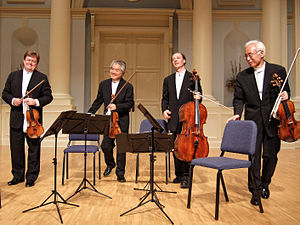
Main characteristics
Classical music has a lighter, clearer texture than Baroque music and is less complex. It is mainly homophonic[3]—melody above chordal accompaniment (but counterpoint is by no means forgotten, especially later in the period).
Variety and contrast within a piece became more pronounced than before. Variety of keys, melodies, rhythms and dynamics (using crescendo, diminuendo and sforzando), along with frequent changes of mood and timbre were more commonplace in the Classical period than they had been in the Baroque. Melodies tended to be shorter than those of Baroque music, with clear-cut phrases and clearly marked cadences. The orchestra increased in size and range; the harpsichord continuo fell out of use, and the woodwind became a self-contained section. As a solo instrument, the harpsichord was replaced by the piano (or fortepiano). Early piano music was light in texture, often with Alberti bass accompaniment, but it later became richer, more sonorous and more powerful.
Importance was given to instrumental music—the main kinds were sonata, trio, string quartet, symphony, concerto, serenade and divertimento. Sonata form developed and became the most important form. It was used to build up the first movement of most large-scale works, but also other movements and single pieces (such as overtures).
History
The Baroque/Classical transition c. 1730–1760

At first the new style took over Baroque forms—the ternary da capo aria and the sinfonia and concerto—but composed with simpler parts, more notated ornamentation and more emphatic division into sections. However, over time, the new aesthetic caused radical changes in how pieces were put together, and the basic layouts changed. Composers from this period sought dramatic effects, striking melodies, and clearer textures. The Italian composer Domenico Scarlatti was an important figure in the transition from Baroque to Classical. His unique compositional style is strongly related to that of the early Classical period. He is best known for composing more than five hundred one-movement keyboard sonatas. In Spain, Antonio Soler also produced valuable keyboard sonatas, more varied in form than those of Scarlatti, with some pieces in three or four movements.
Baroque music generally uses many harmonic fantasies and does not concentrate that much on the structure of the musical piece, musical phrases and motives. In the classical period, the harmonic functions are simpler. However, the structure of the piece, the phrases and motives, are much more important in the tunes than in the Baroque period.
Another important break with the past was the radical overhaul of opera by Christoph Willibald Gluck, who cut away a great deal of the layering and improvisational ornament and focused on the points of modulation and transition. By making these moments where the harmony changes more focal, he enabled powerful dramatic shifts in the emotional color of the music. To highlight these episodes he used changes in instrumentation, melody, and mode. Among the most successful composers of his time, Gluck spawned many emulators, one of whom was Antonio Salieri. Their emphasis on accessibility brought huge successes in opera, and in vocal music more widely: songs, oratorios, and choruses. These were considered the most important kinds of music for performance and hence enjoyed greatest success in the public estimation.
The phase between the Baroque and the rise of the Classical, with its broad mixture of competing ideas and attempts to unify the different demands of taste, economics and "worldview", goes by many names. It is sometimes called Galant, Rococo, or pre-Classical, or at other times early Classical[citation needed]. It is a period where some composers still working in the Baroque style flourish, though sometimes thought of as being more of the past than the present—Bach, Handel, and Telemann all composed well beyond the point at which the homophonic style is clearly in the ascendant. Musical culture was caught at a crossroads: the masters of the older style had the technique, but the public hungered for the new. This is one of the reasons C. P. E. Bach was held in such high regard: he understood the older forms quite well and knew how to present them in new garb, with an enhanced variety of form.
Circa 1750–1775

By the late 1750s there were flourishing centers of the new style in Italy, Vienna, Mannheim, and Paris; dozens of symphonies were composed and there were bands of players associated with theatres. Opera or other vocal music was the feature of most musical events, with concertos and symphonies (arising from the overture) serving as instrumental interludes and introductions for operas and church services. Over the course of the Classical period, symphonies and concertos developed and were presented independently of vocal music.
The "normal" ensemble—a body of strings supplemented by winds—and movements of particular rhythmic character were established by the late 1750s in Vienna. However, the length and weight of pieces was still set with some Baroque characteristics: individual movements still focused on one "affect" or had only one sharply contrasting middle section, and their length was not significantly greater than Baroque movements. There was not yet a clearly enunciated theory of how to compose in the new style. It was a moment ripe for a breakthrough.
Many consider this breakthrough to have been made by C. P. E. Bach, Gluck, and several others. Indeed, C. P. E. Bach and Gluck are often considered founders of the Classical style.
The first great master of the style was the composer Joseph Haydn. In the late 1750s he began composing symphonies, and by 1761 he had composed a triptych (Morning, Noon, and Evening) solidly in the contemporary mode. As a vice-Kapellmeister and later Kapellmeister, his output expanded: he composed over forty symphonies in the 1760s alone. And while his fame grew, as his orchestra was expanded and his compositions were copied and disseminated, his voice was only one among many.
While some suggest that he was overshadowed by Mozart and Beethoven, it would be difficult to overstate Haydn's centrality to the new style, and therefore to the future of Western art music as a whole. At the time, before the pre-eminence of Mozart or Beethoven, and with Johann Sebastian Bach known primarily to connoisseurs of keyboard music, Haydn reached a place in music that set him above all other composers except perhaps George Frideric Handel. He took existing ideas, and radically altered how they functioned—earning him the titles "father of the symphony" and "father of the string quartet".
One of the forces that worked as an impetus for his pressing forward was the first stirring of what would later be called Romanticism—the Sturm und Drang, or "storm and stress" phase in the arts, a short period where obvious emotionalism was a stylistic preference. Haydn accordingly wanted more dramatic contrast and more emotionally appealing melodies, with sharpened character and individuality. This period faded away in music and literature: however, it influenced what came afterward and would eventually be a component of aesthetic taste in later decades.
The Farewell Symphony, No. 45 in F♯ Minor, exemplifies Haydn's integration of the differing demands of the new style, with surprising sharp turns and a long adagio to end the work. In 1772, Haydn completed his Opus 20 set of six string quartets, in which he deployed the polyphonic techniques he had gathered from the previous era to provide structural coherence capable of holding together his melodic ideas. For some, this marks the beginning of the "mature" Classical style, in which the period of reaction against late Baroque complexity yielded to a period of integration Baroque and Classical elements.
Circa 1775–1790
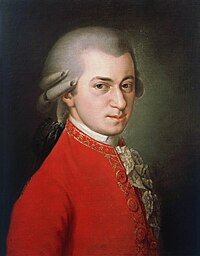
Haydn, having worked for over a decade as the music director for a prince, had far more resources and scope for composing than most and also the ability to shape the forces that would play his music. This opportunity was not wasted, as Haydn, beginning quite early on his career, sought to press forward the technique of building ideas in music. His next important breakthrough was in the Opus 33 string quartets (1781), in which the melodic and the harmonic roles segue among the instruments: it is often momentarily unclear what is melody and what is harmony. This changes the way the ensemble works its way between dramatic moments of transition and climactic sections: the music flows smoothly and without obvious interruption. He then took this integrated style and began applying it to orchestral and vocal music.
Haydn's gift to music was a way of composing, a way of structuring works, which was at the same time in accord with the governing aesthetic of the new style. However, a younger contemporary, Wolfgang Amadeus Mozart, brought his genius to Haydn's ideas and applied them to two of the major genres of the day: opera, and the virtuoso concerto. Whereas Haydn spent much of his working life as a court composer, Mozart wanted public success in the concert life of cities. This meant opera, and it meant performing as a virtuoso. Haydn was not a virtuoso at the international touring level; nor was he seeking to create operatic works that could play for many nights in front of a large audience. Mozart wanted both. Moreover, Mozart also had a taste for more chromatic chords (and greater contrasts in harmonic language generally), a greater love for creating a welter of melodies in a single work, and a more Italianate sensibility in music as a whole. He found, in Haydn's music and later in his study of the polyphony of Bach, the means to discipline and enrich his gifts.

Mozart rapidly came to the attention of Haydn, who hailed the new composer, studied his works, and considered the younger man his only true peer in music. In Mozart, Haydn found a greater range of instrumentation, dramatic effect and melodic resource; the learning relationship moved in two directions.
Mozart's arrival in Vienna in 1780 brought an acceleration in the development of the Classical style. There Mozart absorbed the fusion of Italianate brilliance and Germanic cohesiveness that had been brewing for the previous 20 years. His own taste for brilliances, rhythmically complex melodies and figures, long cantilena melodies, and virtuoso flourishes was merged with an appreciation for formal coherence and internal connectedness. It is at this point that war and inflation halted a trend to larger orchestras and forced the disbanding or reduction of many theater orchestras. This pressed the Classical style inwards: toward seeking greater ensemble and technical challenge—for example, scattering the melody across woodwinds, or using thirds to highlight the melody taken by them. This process placed a premium on chamber music for more public performance, giving a further boost to the string quartet and other small ensemble groupings.
It was during this decade that public taste began, increasingly, to recognize that Haydn and Mozart had reached a higher standard of composition. By the time Mozart arrived at age 25, in 1781, the dominant styles of Vienna were recognizably connected to the emergence in the 1750s of the early Classical style. By the end of the 1780s, changes in performance practice, the relative standing of instrumental and vocal music, technical demands on musicians, and stylistic unity had become established in the composers who imitated Mozart and Haydn. During this decade Mozart composed his most famous operas, his six late symphonies that helped to redefine the genre, and a string of piano concerti that still stand at the pinnacle of these forms.
One composer who was influential in spreading the more serious style that Mozart and Haydn had formed is Muzio Clementi, a gifted virtuoso pianist who tied with Mozart in a musical "duel" before the emperor in which they each improvised and performed their compositions. Clementi's sonatas for the piano circulated widely, and he became the most successful composer in London during the 1780s. Also in London at this time was Jan Ladislav Dussek, who, like Clementi, encouraged piano makers to extend the range and other features of their instruments, and then fully exploited the newly opened possibilities. The importance of London in the Classical period is often overlooked, but it served as the home to the Broadwood's factory for piano manufacturing and as the base for composers who, while less notable than the "Vienna School", had a decisive influence on what came later. They were composers of many fine works, notable in their own right. London's taste for virtuosity may well have encouraged the complex passage work and extended statements on tonic and dominant.
Circa 1790–1820
When Haydn and Mozart began composing, symphonies were played as single movements—before, between, or as interludes within other works—and many of them lasted only ten or twelve minutes; instrumental groups had varying standards of playing, and the continuo was a central part of music-making.
In the intervening years, the social world of music had seen dramatic changes. International publication and touring had grown explosively, and concert societies formed. Notation became more specific, more descriptive—and schematics for works had been simplified (yet became more varied in their exact working out). In 1790, just before Mozart's death, with his reputation spreading rapidly, Haydn was poised for a series of successes, notably his late oratorios and "London" symphonies. Composers in Paris, Rome, and all over Germany turned to Haydn and Mozart for their ideas on form.
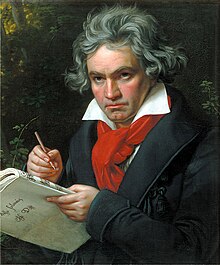
The time was again ripe for a dramatic shift. In the 1790s, a new generation of composers, born around 1770, emerged. While they had grown up with the earlier styles, they heard in the recent works of Haydn and Mozart a vehicle for greater expression. In 1788 Luigi Cherubini settled in Paris and in 1791 composed Lodoiska, an opera that raised him to fame. Its style is clearly reflective of the mature Haydn and Mozart, and its instrumentation gave it a weight that had not yet been felt in the grand opera. His contemporary Étienne Méhul extended instrumental effects with his 1790 opera Euphrosine et Coradin, from which followed a series of successes.
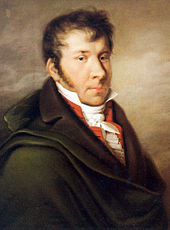
The most fateful of the new generation was Ludwig van Beethoven, who launched his numbered works in 1794 with a set of three piano trios, which remain in the repertoire. Somewhat younger than the others, though equally accomplished because of his youthful study under Mozart and his native virtuosity, was Johann Nepomuk Hummel. Hummel studied under Haydn as well; he was a friend to Beethoven and Franz Schubert. He concentrated more on the piano than any other instrument, and his time in London in 1791 and 1792 generated the composition and publication in 1793 of three piano sonatas, opus 2, which idiomatically used Mozart's techniques of avoiding the expected cadence, and Clementi's sometimes modally uncertain virtuoso figuration. Taken together, these composers can be seen as the vanguard of a broad change in style and the center of music. They studied one another's works, copied one another's gestures in music, and on occasion behaved like quarrelsome rivals.
The crucial differences with the previous wave can be seen in the downward shift in melodies, increasing durations of movements, the acceptance of Mozart and Haydn as paradigmatic, the greater use of keyboard resources, the shift from "vocal" writing to "pianistic" writing, the growing pull of the minor and of modal ambiguity, and the increasing importance of varying accompanying figures to bring "texture" forward as an element in music. In short, the late Classical was seeking a music that was internally more complex. The growth of concert societies and amateur orchestras, marking the importance of music as part of middle-class life, contributed to a booming market for pianos, piano music, and virtuosi to serve as examplars. Hummel, Beethoven, and Clementi were all renowned for their improvising.
Direct influence of the Baroque continued to fade: the figured bass grew less prominent as a means of holding performance together, the performance practices of the mid-18th century continued to die out. However, at the same time, complete editions of Baroque masters began to become available, and the influence of Baroque style continued to grow, particularly in the ever more expansive use of brass. Another feature of the period is the growing number of performances where the composer was not present. This led to increased detail and specificity in notation; for example, there were fewer "optional" parts that stood separately from the main score.
The force of these shifts became apparent with Beethoven's 3rd Symphony, given the name Eroica, which is Italian for "heroic", by the composer. As with Stravinsky's The Rite of Spring, it may not have been the first in all of its innovations, but its aggressive use of every part of the Classical style set it apart from its contemporary works: in length, ambition, and harmonic resources as well.
First Viennese School

The First Viennese School is a name mostly used to refer to three composers of the Classical period in late-18th-century Vienna: W. A. Mozart, Haydn, and Beethoven. Franz Schubert is occasionally added to the list.
In German speaking countries, the term Wiener Klassik (lit. Viennese classical era/art) is used. That term is often more broadly applied to the Classical era in music as a whole, as a means to distinguish it from other periods that are colloquially referred to as classical, namely Baroque and Romantic music.
The term "Viennese School" was first used by Austrian musicologist Raphael Georg Kiesewetter in 1834, although he only counted Haydn and Mozart as members of the school. Other writers followed suit, and eventually Beethoven was added to the list.[4] The designation "first" is added today to avoid confusion with the Second Viennese School.
Whilst, Schubert apart, these composers certainly knew each other (with Haydn and Mozart even being occasional chamber-music partners), there is no sense in which they were engaged in a collaborative effort in the sense that one would associate with 20th-century schools such as the Second Viennese School, or Les Six. Nor is there any significant sense in which one composer was "schooled" by another (in the way that Berg and Webern were taught by Schoenberg), though it is true that Beethoven for a time received lessons from Haydn.
Attempts to extend the First Viennese School to include such later figures as Anton Bruckner, Johannes Brahms, and Gustav Mahler are merely journalistic, and never encountered in academic musicology.
Classical influence on later composers
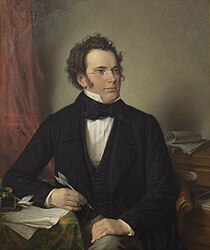
Musical eras seldom disappear at once; instead, features are replaced over time, until the old is simply felt as "old-fashioned". The Classical style did not "die" so much as transform under the weight of changes.
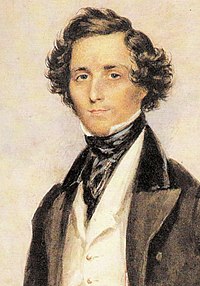
One crucial change was the shift towards harmonies centering around "flatward" keys: shifts in the subdominant direction. In the Classical style, major key was far more common than minor, chromaticism being moderated through the use of "sharpward" modulation, and sections in the minor mode were often merely for contrast. Beginning with Mozart and Clementi, there began a creeping colonization of the subdominant region. With Schubert, subdominant moves flourished after being introduced in contexts in which earlier composers would have confined themselves to dominant shifts. This introduced darker colors to music, strengthened the minor mode, and made structure harder to maintain. Beethoven contributed to this by his increasing use of the fourth as a consonance, and modal ambiguity—for example, the opening of the D Minor Symphony.
Franz Schubert, Carl Maria von Weber, and John Field are among the most prominent in this generation of "Classical Romantics", along with the young Felix Mendelssohn. Their sense of form was strongly influenced by the Classical style, and they were not yet "learned" (imitating rules which were codified by others), but they directly responded to works by Beethoven, Mozart, Clementi, and others, as they encountered them. The instrumental forces at their disposal were also quite "Classical" in number and variety, permitting similarity with Classical works.
However, the forces destined to end the hold of the Classical style gathered strength in the works of each of the above composers. The most commonly cited one is harmonic innovation. Also important is the increasing focus on having a continuous and rhythmically uniform accompanying figuration: Beethoven's Moonlight Sonata was the model for hundreds of later pieces—where the shifting movement of a rhythmic figure provides much of the drama and interest of the work, while a melody drifts above it. Greater knowledge of works, greater instrumental expertise, increasing variety of instruments, the growth of concert societies, and the unstoppable domination of the piano—which created a huge audience for sophisticated music—all contributed to the shift to the "Romantic" style.
Drawing the line between these two styles is impossible: some sections of Mozart's works, taken alone, are indistinguishable in harmony and orchestration from music written 80 years later—and composers continue to write in normative Classical styles into the 20th century. Even before Beethoven's death, composers such as Louis Spohr were self-described Romantics, incorporating, for example, more extravagant chromaticism in their works.
However, Vienna's fall as the most important musical center for orchestral composition is generally felt to mark the Classical style's final eclipse—and the end of its continuous organic development of one composer learning in close proximity to others. Franz Liszt and Frédéric Chopin visited Vienna when young, but they then moved on to other vistas. Composers such as Carl Czerny, while deeply influenced by Beethoven, also searched for new ideas and new forms to contain the larger world of musical expression and performance in which they lived.
Renewed interest in the formal balance and restraint of 18th century classical music led in the early 20th century to the development of so-called Neoclassical style, which numbered Stravinsky and Prokofiev among its proponents, at least at certain times in their careers.
Classical period instruments

Strings
- Violin
- Viola
- Cello
- Contrabass
Woodwinds
Keyboards
Brasses
- Buccin
- Ophicleide – serpent replacement, precursor of tuba
- French horn
Timeline of Classical composers

See also
Notes
- ^ Kennedy, Michael (2006), The Oxford Dictionary of Music, 985 pages, ISBN 0-19-861459-4
- ^ a b c Kamien, Roger. Music: An Appreciation. 6th. New York, NY: McGraw Hill, 2008. Print.
- ^ Blume, Friedrich. Classic and Romantic Music: A Comprehensive Survey. New York: W.W. Norton . & Company, 1970. Print.
- ^ Sadie, Stanley; Tyrrell, John, eds. (2001). The New Grove Dictionary of Music and Musicians (2nd ed.). London: Macmillan Publishers. ISBN 978-1-56159-239-5.
{{cite encyclopedia}}: Missing or empty|title=(help)
References
- Kennedy, Michael (2006), The Oxford Dictionary of Music, 985 pages, ISBN 0-19-861459-4
Further reading
- Rosen, Charles (1972 expanded 1997) - The Classical Style. New York: W.W. Norton. ISBN 978-0-393-04020-3 (expanded edition with CD, 1997)
- Downs, Philip G. (1992) - Classical Music: The Era of Haydn, Mozart, and Beethoven, 4th vol of Norton Introduction to Music History. W.W. Norton & Company. ISBN 0-393-95191-X (hardcover).
- Lihoreau, Tim; Fry, Stephen (2004) - Stephen Fry's Incomplete and Utter History of Classical Music. Boxtree. ISBN 978-0-7522-2534-0
- Taruskin, Richard (2005, rev. Paperback version 2009) - Oxford History of Western Music. Oxford University Press (USA). ISBN 978-0-19-516979-9 (Hardback), ISBN 978-0-19-538630-1 (Paperback)
- Hanning, Barbara Russano; Grout, Donald Jay (1998 rev. 2006)- Concise History of Western Music. W.W. Norton & Company. ISBN 0-393-92803-9 (hardcover).
- Grout, Donald Jay; Palisca, Claude V. (1996) - A History of Western Music, Fifth Edition. W.W. Norton & Company. ISBN 0-393-96904-5 (hardcover).
External links
- Pandora Radio: Classical Period
- Classical Net – Classical Music Reference Site
- Directories of composers and performers of classical.music
- NMA (Neue Mozart-Ausgabe) Online – Mozart's scores
- Free scores by various classical composers at the International Music Score Library Project (IMSLP)
